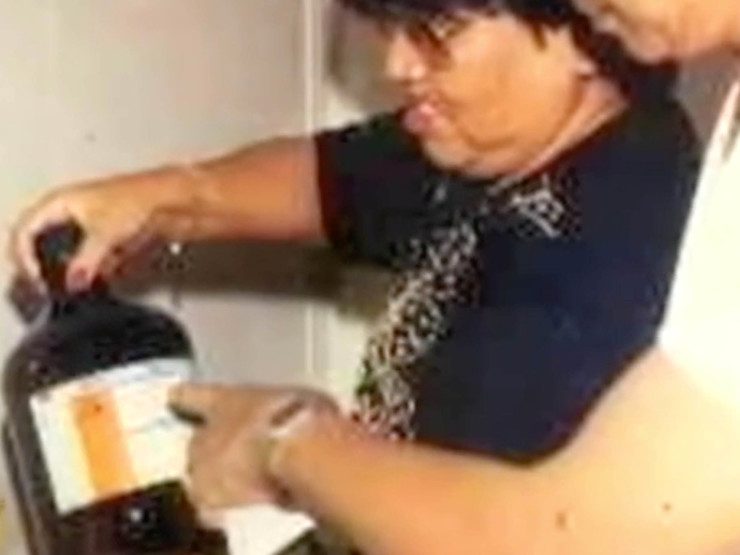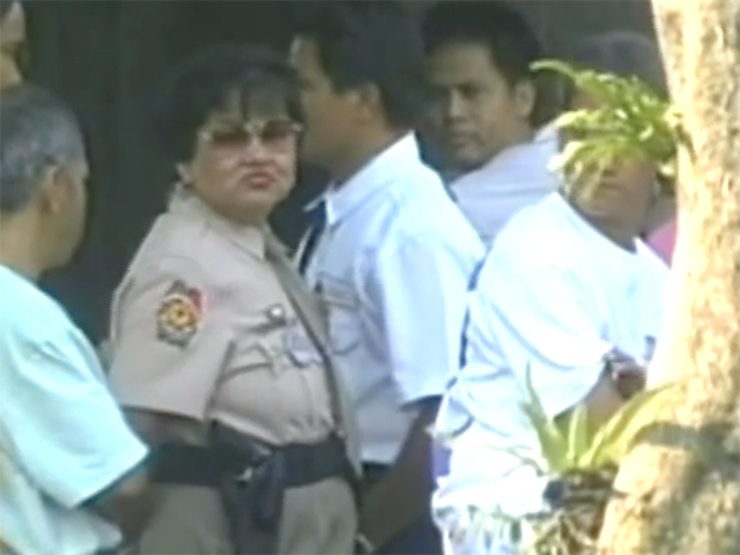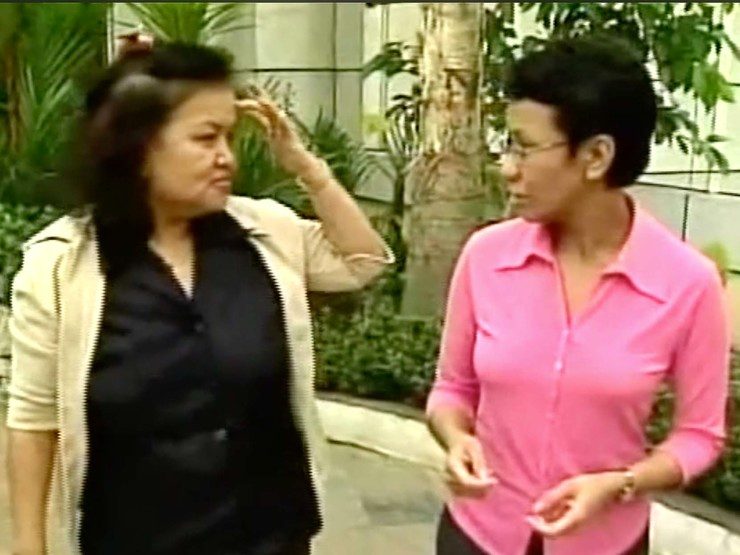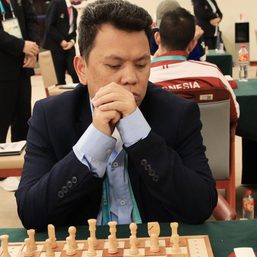SUMMARY
This is AI generated summarization, which may have errors. For context, always refer to the full article.

MANILA, Philippines – In 1995, a freak Manila apartment fire led to the discovery of a plot to assassinate Pope John Paul II and the dismantling of a terrorist cell that gave al-Qaeda its most imaginative plots using airplanes: a foiled shoebomber and London liquid explosives plot and, of course, 9/11.
Three men were discovered by authorities: Ramzi Yousef, a Pakistani who truck-bombed the World Trade Center in 1993; Wali Khan Amin Shah, who fought with Osama bin Laden in Afghanistan; and Khalid Shaikh Mohammed, Yousef’s uncle and the mastermind of 9/11.
Twenty years ago, Yousef was sharing that Manila apartment close to the Apostolic Nunciature with another Pakistani, Abdul Hakim Murad, perhaps the first pilot recruited by al-Qaeda. He was arrested by a Filipina police officer, Aida Fariscal, whose work was crucial to saving thousands of lives.
Friends and colleagues say she never received the recognition she deserved for her work by the institution she served, and her family say that haunted her until her death.
Below is an excerpt from my 2003 book Seeds of Terror about that fateful night in January, 1995, when Aida Fariscal helped save the Pope and prevent the execution of Oplan Bojinka, which – if successful – would’ve killed more people than 9/11.
Excerpts
The story has often been told of how a smoky accident in Yousef’s apartment happened to draw police attention, and though Yousef escaped, his laptop provided the stunning news that his attacks were nearly ready for execution. The story is true as far as it goes, but the Philippine authorities were not quite so asleep at the wheel. The explosion aboard Philippine Airlines flight 434 had placed the police on heightened alert with the pope’s visit just a few weeks away. Yousef had called the Associated Press, claiming that Abu Sayyaf was responsible, which suggested Filipino suspects, but Avelino “Sonny” Razon of the Presidential Security Group (PSG) tasked with security for the pope’s visit was tipped to watch for Middle Easterners. “The PNP (Philippine National Police) particularly the PSG was on heightened alert because in December 1994, we received reports that a group of Middle Eastern personalities would be coming over to the Philippines to assassinate the Pope,” he said.
By January 6, the police were on red alert. When senior superintendent Aida Fariscal got a call about a fire in the Dona Josefa Apartments a little after 11:00 PM, she looked out the window of the Western Police District. Although she saw no smoke at the building a few blocks away, she asked her night-duty officer to check it out. Patrolman Ariel Fernandez was gone almost an hour. When he returned, Aida, impatient, grilled him in Tagalog, the native language.

“Ariel, what happened to you? Were you barbecued or did you go out drinking?” You took so long. Don’t you know I’ve been waiting?” Aida berated Ariel.
“Ma’am, don’t worry. The fire alarm went off. There was no fire,” Ariel responded. It’s customary to address a superior as “sir” or “ma’am” in the Philippines as a sign of respect, and Ariel was a fledgling compared to Aida, who had developed a reputation as a tough-talking, hard-working officer. She was stubborn, and that always helped her. “So why was there a fire?” she asked.
“Ma’am, those Pakistanis in room 603 were playing with firecrackers.”
“The New Year is over,” she said. New Year’s in the Philippines is like the Fourth of July in the United States. Nearly every Filipino family stages its own fireworks display. “It’s over; it’s almost the Feast of Three Kings. How were they playing with firecrackers?”
“Ma’am, the Pakistani showed us. He said they spilled the powder at the sink, and then they lit a match. That caused a big explosion with lots of black smoke. They couldn’t stop the smoke so they opened the window. That’s what the tenants there noticed. That’s why they called us here.”
“And then what happened?”
“When we arrived, the Pakistani” – whom they would later find out was Murad – “was at the edge of the stairs on the ground floor. The other guy” – Ramzi Yousef – “was leaning against the ledge of the security guard at the lobby. The fireman asked them, ‘So what happened to your room? There’s a reported fire alarm.’ ‘Well, don’t worry, we were just playing with firecrackers,’ they said. So everyone got into the elevator” – their apartment was on the top floor of the building. “When we got inside the apartment, 603, ma’am, we smelled the powder. But the powder wasn’t black; it looked like salt. It was white. The firemen saw it – spread over everywhere. Then we inspected the room with the firemen and the tenants. Inside the bedroom. They kept saying, ‘Well, nothing happened. Nothing burned.’ The firemen weren’t suspicious, so they said, ‘Okay, everybody, go home. There’s no fire after all, no fire, so let’s go home.’ So we left,” Ariel said.
“I didn’t have to think,” Aida recalled to me seven years after that incident. “I told Ariel immediately, ‘Wait for me. I’m going to get dressed. I don’t believe they were playing with firecrackers. We’re going to find ourselves a bomb and some terrorists.’”

I marveled at the details she remembered. We were sitting in a restaurant in the Malate district, now converted from the red-light 24-hour entertainment houses to a very respectable restaurant row. Aida is a character: she was wearing shiny camouflage pants, hoop earrings, and bright pink lipstick. Retired from the force and a grandmother now, she asked that we pick a table with our backs to the walls “for security reasons.” Old habits die hard. After that night in 1995, she had asked for and was assigned a security guard because she feared for her safety. “Ramzi Yousef is a powerful man,” she said at the time. Seven years later, Aida retained her idiosyncrasies: a strange mixture of bombast, vulnerability, and strength. I could see she was bitter; she had an axe to grind. After all, if it wasn’t for her initative, the terrorists would have escaped. Yet she was overlooked in the promotions and accolades by what she saw as a male bureaucracy.
Persistent, stubborn
Certainly things might have turned out differently if she hadn’t gone back to the apartment. Perhaps the pope would have been assassinated. Less than two weeks after that night, they and three others were scheduled to board several airplanes each, to the United States, to set bombs that would explode somewhere over the ocean. Documents in Yousef’s laptop outlined attacks against eleven planes, although KSM would later tell his US interrogators that they targeted twelve planes. It was supposed to be “48 hours of terror.” If they had succeeded, US prosecutors say, they would have killed more than four thousand people and shut down the airline industry. Yousef called it Operation Bojinka – code for “big bang” – al-Qaeda’s most imaginative plot at that time.
Aida Fariscal stopped it by being persistent and stubborn. “I got dressed.” She explained, “I was living in the police station at that time, and I couldn’t go dressed the way I was. I had on a flowered dress and my rubber slippers.” She changed to her uniform and walked to the Dona Josefa. She asked Ariel and another officer, Reyaldo Tizon, to come along as backup. She almost forgot to bring her gun, but she thought to call the guard at Dona Josefa, Roman Mariano, to ask him not to let his tenants leave. He replied they were already gone. She told him: “Mariano, we’re coming back. Act like you don’t know us. Get the keys from the front desk. When you see Ariel arrive, just walk ahead to the room. Don’t let on we know each other because you’re not supposed to open the apartment.”
Aida had no search warrant, and it was the middle of the night. “I gave him good advice,” She told me, “and this is verbatim what I told him: ‘Those who live there, they’re the ones who the newspapers are talking about who are about to do something evil to that Very Important Person who will visit our country in a week’s time. Your building is going to be pulverized. That’s why you need to take care of us, and don’t tell the front desk.’” When they arrived at Dona Josefa, Aida and Ariel walked in. Roman Mariano saw them, got the key, and walked toward the elevator. All three waited; no one spoke. When they got upstairs, Roman led the way to the apartment and opened the door. Aida walked in. “Now I finally saw what Ariel saw, but he didn’t have imagination. Me, I have a fertile imagination.”
The one-bedroom apartment stunned her. The first thing she saw were cabinet dividers. On the lower shelves were four unopened boxes of portable gas stoves. She remembered the markings: General Electric. Above that were what looked like several large bundles of industrial-size cotton balls. Beyond the divider was a round marble table with a pouch that contained loops of electrical wiring: green yellow, blue, and red. In the corner of the room sat large, opened cardboard boxes. Inside, she saw large bottles – “like the large mineral water that you turn upside down. I saw reading from the brand of the packages they were chemicals: sulfuric, chloric, whatever. The brand is from Germany. My heart was beating fast now, and my imagination was running away. I asked myself, ‘Who sold this to the Philippines? How did these chemicals get here? They’re so big!’ And then I asked Mariano, ‘Where is the telephone?’”
Aida crossed to the other side and saw a cabinet with a mirror. In the cabinet, she saw two Bibles. Lodged into the mirror’s frame, she saw a picture o the pope – “the kind you can buy on the sidewalk,” she said. Also on the cabinet was hair-coloring dye as well as two rosaries, including the large brown ones normally carried by priests. Several contact lens cases were scattered on the ledge. Aida crossed into the bedroom and saw more cotton balls. These looked used. “They had a yellowish color,” she said, “like they had been dipped in some of the chemicals I saw there.”
Just then the telephone rang. She jumped with fright. “They want to know if there’s anyone here,” she realized. “I told everyone, ‘Get out. No one run, no loud noises. Let’s just go.’ You remember the movie with Sylvester Stallone – The Specialist?” she asked me. “The telephone rang, and then when they picked up, it triggered an explosion that split the building in two.”
I marveled at Aida’s reasoning – the mixture of real-life police savvy that came from experience and the dash of Hollywood all too prevalent in the Philippines. That’s what makes this country unique: Filipinos take Hollywood seriously. There’s a saying that’s become popular: the Philippines spent 250 years in a convent and 50 years in Hollywood. Aida was the product of her culture: extremely religious and extremely romantic. Whatever the reason, her caution was good. FBI agents would later tell the Philippine police that the chemicals in the room were so combustible and unstable that a lit match or sparks from two objects rubbing together would have taken the building down.
Aida, Tizon, Ariel, and Mariano got in the elevataor. She asked Mariano to stand lookout and let her know if the two tenants returned. She positioned Tizon across the street. She thought he was too new and a bit of a coward. She asked Ariel to stay with her while she called her superiors for backup and to let them know what they had found. She was just dialing the number when Mariano began to signal frantically. She pushed Ariel to act, and he stopped the man – handsome, she said, about mid-twenties – at the foot of the stairs. Aida put down the phone when she heard the two men arguing. She tried to break them up.
Manufacturing bombs
“Good evening, Sir. I’m the superior officer of this young officer. We’ve been waiting a while for you to report what happened in your room,” Aida said.
“I was going to do that. That’s why I came back, but this little policeman is telling me that we are making bombs,” he responded.
Ariel chimed in, “It’s really true. You are really manufacturing bombs.” In Tagalog, Aida told Ariel to be quiet and began to read Murad his rights. When Tizon crossed from the other side of the street, Aida went back to the front desk: she had to let her commanding officers know, and she remembered they needed a search warrant. While she was making the call, she heard a gunshot. Ariel was taking aim at Murad, who was running away. Tizon was chasing him, but Murad had too much of a head start – until he tripped on the exposed roots of one of the trees uprooted by a recent typhoon. When they finally caught him, they used rope from a clothesline to tie his hands since none of the policemen had handcuffs.
Getting Murad back to the precinct was a comedy of sorts. Aida and her men didn’t have a squad car, so she tried to commandeer a jeepney – the World War II-era jeeps that had been converted to colorful public transportation. The driver didn’t stop. Finally, she was able to get a minivan taxi. At the station, Murad offered Aida $2,000 to let him go. That’s more money than any Philippine police officer made in a year. Aida turned him down. She booked him as a Pakistani national under the name he gave: Saeed Ahmed.
Aida went back to apartment 603 around 2:30 AM to wait for the bomb squad. Police teams began arriving at 4:00 AM. The bomb squads and security teams, including the PSG, arrived later. Backup teams were stationed outside the Dona Josefa building. Those inside apartment 603 took an inventory of what they found in the room: assorted highly volatile chemicals, chemical glassware, wiring, timers, twelve fake passports, the business card of Mohammed Jamal Khalifa, chemistry books, manuals on manufacturing bombs, and, underneath the kitchen sink, a pipe bomb attached to a Casio wristwatch timer. Perhaps the most important find was Ramzi Yousef’s laptop computer and four diskettes. One file, code-named Bojinka, specified all the plans for the 48 hours of terror. – Rappler.com
Add a comment
How does this make you feel?





There are no comments yet. Add your comment to start the conversation.